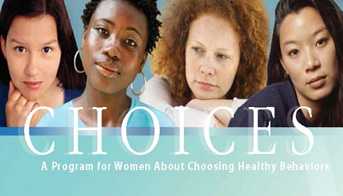CHOICES: Preventing Alcohol Exposed Pregnancies
Alcohol use during pregnancy is a major public health problem. One in 10 pregnant women reports alcohol use in the past 30 days.

Click here to download a fact sheet on CHOICES
Drinking alcohol during pregnancy can cause miscarriage, stillbirth, and a range of physical, behavioral, and intellectual disabilities for the baby that can last a lifetime. These disabilities are known as fetal alcohol spectrum disorders (FASDs). We do not know exactly how many people have FASDs. Based on community studies using physical examinations, experts estimate that the full range of FASDs among 6-7 year old children in the United States and some Western European countries might number as high as 20 to 50 out of 1,000 (or 2% to 5%).
Too many women continue to drink during pregnancy. Among nonpregnant women aged 18-44 years:
- About half (53.6%) reported drinking alcohol and
- 1 in 5 (18.2%) reported binge drinking (defined as four or more drinks on at least one occasion in the past 30 days).
Almost half of all pregnancies in the United States are unplanned. Alcohol consumption that produces high blood alcohol concentrations, such as binge drinking, is also common among women with an unintended pregnancy. Among pregnant women aged 18-44 years:
- 1 in 10 (10.2%) reported drinking alcohol and
- 1 in 33 (3.1%) reported binge drinking
FASDs are one of the leading preventable causes of developmental disabilities in the United States.
Many women become pregnant and do not know it until 4 to 6 weeks into the pregnancy. This means they might be drinking and unaware they are exposing the developing baby to alcohol.
An evidence-based program that works to prevent alcohol-exposed pregnancies is CHOICES. CHOICES is based on activities that research has shown to be effective.
- Page last reviewed: April 4, 2017
- Page last updated: October 4, 2016
- Content source:



 ShareCompartir
ShareCompartir
